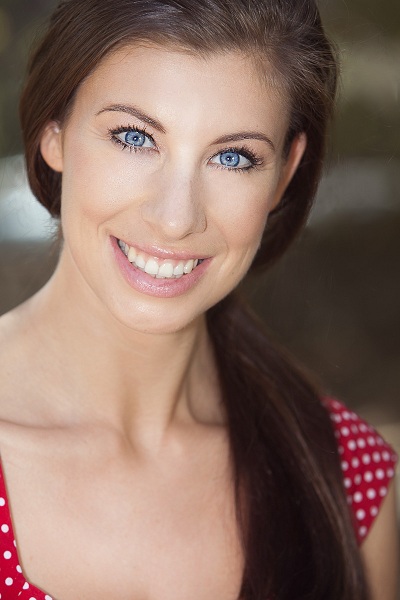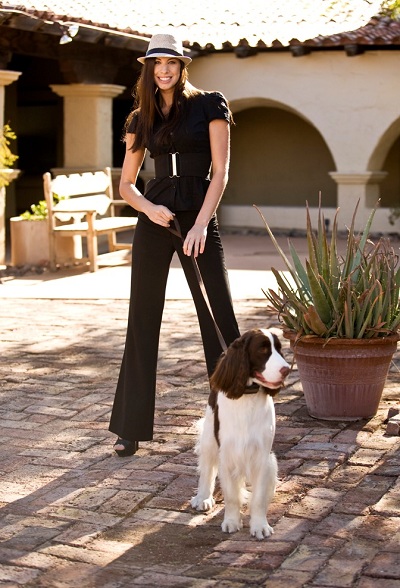Model Portfolios
A model’s portfolio is like a key card to access the building where she works; without one she can’t work. Needless to say, a portfolio is a very important investment in her future and career.
Model portfolios are usually bound folders with the agency’s logo printed on the front cover and a number of clear plastic sheets inside to showcase her best photographs. They are usually referred to as “books” within the industry.
Portfolios are taken to castings and auditions where the client may look through it to determine whether the model is right for the job at hand. A portfolio showcases the versatility of the model and could help the client’s imagination when trying to answer the question of who will best sell their product. However, it is common for clients not to look through a model’s book at all. They often want to see the model face-to-face, take some snapshots and decide from there if she’s right for the job. This doesn’t mean, however, that a model should take a chance and arrive without a portfolio.

Model: Maria Eriksson
What is in a portfolio?
Each agency will advise their models to display portfolio photographs in a particular way. Most agencies like the images to be no more than six months old to reflect the model’s current appearance and showcase up-to-date photography and fashion trends.
Most agencies recommend a mixture of headshots, three-quarter or half-length shots and full-length shots in a model’s book. A headshot is most often used as the first image in a model’s portfolio. After that, half and full-length images follow to clearly display the model’s body.

Model: Maria Eriksson
Avoid having numerous images in the same outfit or location, or even having images all shot by the same photographer. A mix of photo angles, fashion including swimwear and/or lingerie, hairstyles and makeup in images from different photographers will all collate to show the model’s versatility and therefore increase her potential of landing a job.
It is advantageous to know who the client is or what the job is for before attending the casting or audition. With this information a model can add or subtract images from her book, catering to the job for which she is applying. For example, if she is auditioning for a swimwear client, have a slight swimwear or lingerie bias in her book as opposed to ski wear or fashion shots covering her body.
As a model’s career grows, she should replace the images in her portfolio with tear sheets, which are images of the model torn from printed media such as magazine advertisements. These show prospective employers proof of her experience and visibility.

Model: Maria Eriksson
The future of portfolios
While working in Asia my agent asked me to use an iPad as my portfolio. Many agencies now prefer a tablet to display work as opposed to a printed book. Using a tablet rather than a printed portfolio has both advantages and disadvantages.
A tablet device like an iPad means there are no printing costs associated with continually adding images to portfolios—high quality 8×12 prints can be expensive. And, since an iPad is backlit, images “pop” in a way they don’t in a printed portfolio.

Model: Maria Eriksson
However, tablets are not cheap. A printed portfolio with an agent’s logo costs around $50, but of course there is also the continual printing cost of the images on top of that. Images can be updated on a tablet by merely swapping photos in and out of folders, which is easy and cost-free. It is also a great advantage to have several portfolios on a tablet in different folders displaying separate work. Swimwear, lingerie, lifestyle, sports or catalog work can quickly be presented to differing clients.

Model: Maria Eriksson
One thing a printed portfolio is advantageous for, in my opinion, is to display tear sheets and published work. Some think that magazine and catalog images look better than as a digital file and their authenticity cannot be questioned. The demise of printed magazines and rise of online publications mean that tablets could soon become the sole means of displaying a model’s work. However, it is best to consult your agent before investing in a tablet for portfolio use.
To summarize, a model’s portfolio is a key instrument for her career and should illustrate her versatility and experience. Whether it be in print or tablet format, a good portfolio is a wise investment.


December 01, 2016 at 7:50 am, [email protected] said:
Portfolios of a model are typically bound envelopes with the organization’s logo imprinted on the intro page and various clear plastic sheets inside to showcase her best photos. It takes to castings and tryouts where the customer may look through it to figure out if the model is ideal for the current task. A portfolio showcases the adaptability of the model and could help the customer’s creative energy when attempting to answer the topic of who will best offer their item.
August 17, 2016 at 2:33 pm, Dan Spector said:
Used to be, if you were a Playmate you were famous. But those are out-of-town Playboys, shall we say.
June 30, 2015 at 7:58 pm, Christine said:
I’m finishing my Master’s this year and I want to be a science professor. I’m glad I have a chance for a modeling future too!
May 13, 2015 at 5:59 pm, Silverstream said:
Top agency models in our area are encouraged to have a natural minimal retouching look to their images. As someone who hires agency models, I am terrified of booking someone and having someone looking quite different show up for the shoot when its too late to change. If I see only heavily retouched images in their ports, they will not be chosen. Pretty important to specify that the agency perspective on a good port is different than the port one might have on MM. Also, locally the agencies often require a new port shoot done with who they specify and shot how they specify and discard pretty much everything else they have done.
May 13, 2015 at 12:38 pm, Tony Lawrence said:
Thanks, Maria. She makes several excellent points. Models should have a current portfolio of good images that show them at their best. Too many models opt for free test shoots because they refuse to invest in themselves. If you want to be taken seriously you must work with photographers who have work that make you as a model stand out.
Sometimes really good people offer trades but even then invest in a make-up artist or clothing. Models in general should have a beauty and commercial head shot. A good swimwear shot (2 or more) along with a mix of fashion and commercial images. This holds more true for agency standard models who are at least 5’7″ or taller. Most decent agencies will help you set up your book by providing names of approved photographers.
You don’t have to use who they like of course. Websites like MM and OMP are fun places to network but models seeking work beyond shooting with amateur or hobby photographers are enouraged to approach real world agencies. A tablet is a usefull tool because photos can be uploaded quickly and its less expensive over a longer period. A print book may the better of the two to have however.
May 13, 2015 at 12:19 pm, Jenny Grosso said:
It’s not true that agencies prefer tablets. It is quicker, and a good way to get yourself going to castings while your print portfolio is being developed or while you’re saving up money to buy one, and the prints for it. But in fact, our feedback from casting directors, clients and the models themselves has been that traditional print portfolios are the most engaging, impactful way to present your images. As our lead scout, and the person who runs our open cal three times per weekl, I look at close to 100 portfolios every week. Ipads just aren’t as compelling. People are less likely to spend time looking at everything you have on an ipad portfolio, just quickly swiping through without paying too much attention and stopping whenever they get bored as opposed to getting all the way to the end of the book (because who knows, there could be dozens or hundreds of photos on there!). I mean, think about it, how quickly and often do you accidentally swipe left on Tinder before you realized the picture may have been cute? PRINT YOUR PORTFOLIOS. People will spend more time looking at them 🙂
-Jen, Scouting and Development at Nous Models, Los Angeles.
February 14, 2014 at 3:43 pm, Elizabeth Christensen said:
Plain, simple, direct & fact based.
January 29, 2014 at 2:52 pm, Aaron K said:
Another big advantage with using a tablet is that it gives models the ability to display video content (TVCs, short films, music videos, show reels, etc.).
January 21, 2014 at 8:37 pm, Todd Mizomi said:
Great article! I like how you touched on many of the key points, especially on what specific shots should be included in the portfolio. Might want to do a future article about what NOT to include in a portfolio (still seeing so many cellphone pics on MM) 😉
January 21, 2014 at 7:21 pm, A Jay Douglas said:
Well said, Maria. While I’m old fashioned, I still think some sort of book is a good idea. While not as often as it used to be, I still get requests from ad agency’s for a sample to be presented. At that point, I do exactly as you do as a model, I find out what they are looking for, and slant the book u send them in that direction. Yes, the digital age has made electronic portfolios available, anyone who has shot with me in my studio has seen a number of hard print portfolios.
Very good article! Hope you will share more!
A. Jay Douglas